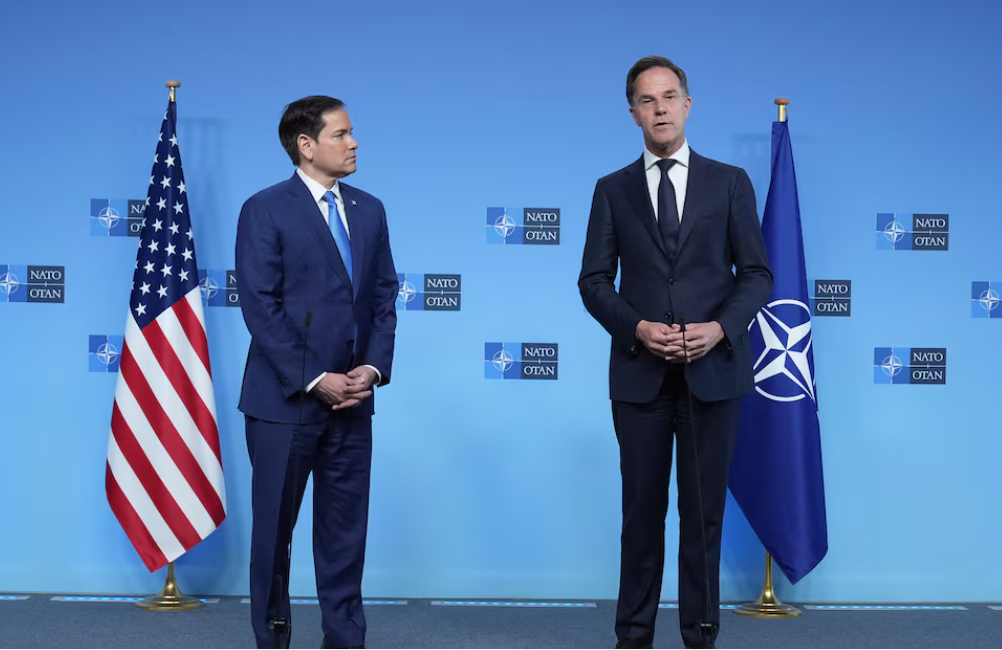US President Donald Trump has escalated tensions in international relations by signing an executive order that launches a large-scale trade war against nearly every other country in the world.
This move signifies the US’s withdrawal from the structured framework of global trade, simultaneously breaking its own rules. Reports have also emerged that Washington has stopped paying its contributions to the World Trade Organization (WTO), adding to the uncertainty. A potential US exit from NATO is now becoming increasingly likely.
On April 2, 2025, foreign ministers from NATO member states gathered in Brussels, hoping to receive clarification from their American counterpart, Marco Rubio, on the US’s intentions, particularly regarding the Alliance’s future.
For more on possible scenarios for NATO’s future and how the Alliance’s leadership is striving to prevent the worst-case outcomes, read the article by Sergiy Sydorenko, European Pravda’s editor—With Trump at any cost? What Europe is willing to sacrifice to keep NATO united and the US as an ally.
NATO officials, up to its highest levels, have firmly rejected the notion that US cooperation with the Alliance will change. The NATO Secretary General has reiterated that the US remains committed to Article 5. However, these assurances, whether sincere or politically necessary, are incomplete without an explanation of why the US’s cooperation remains irreplaceable for the other NATO members.
Just two days after these reassurances, the Washington Post revealed details of a secret Pentagon strategy that dramatically shifted the US’s military posture. The US is now reportedly considering only one scenario for military intervention in the event of an attack by a hostile state. That ally, however, is not a NATO member but Taiwan, which the US plans to defend if China launches a military assault.
This secret memo also acknowledges that the shift in strategy heightens the risk of a Russian attack on Europe, without offering any plans to address it. Nearly a week has passed since the report surfaced, and the Pentagon has not denied the contents. On April 2, NATO Secretary General Mark Rutte confirmed he is treating the memo as a serious development.
This is just one of the many signs indicating the US’s diminishing interest in NATO and its defense commitments. Despite reassuring statements from Mark Rutte and other NATO officials, these are not universally accepted as absolute truth by allied governments. In fact, there is growing evidence that key European states are already working on plans to gradually replace the US within the Alliance.
Privately, NATO officials have acknowledged that a US withdrawal from Europe is not just a possibility but a very real prospect, according to multiple European Pravda sources. However, no one knows the extent of the US’s planned reduction in security presence in Europe or the timing of such a move.
The best-case scenario would involve a negotiated transition, with the US gradually handing over responsibility to its European partners over a 5-10 year period. But does Trump even want this type of “soft” transition? Washington has made no secret of its frustration over Europe’s intention to buy fewer US weapons. If Europe builds up its own defense industry, it will become even less reliant on the US—something the US defense sector is unlikely to support.
This opens the door for less favorable scenarios, including a rapid withdrawal of US forces and military equipment from Europe, economic pressure on European governments to replace US arms purchases, and more aggressive demands for Europeans to increase their defense spending.
The worst-case scenario remains a US exit from NATO’s military command structure, a situation with historical precedent. Europeans understand the implications of this and are willing to do whatever it takes to remain under US protection for the time being.








